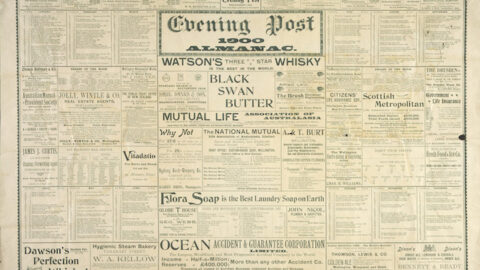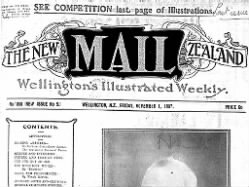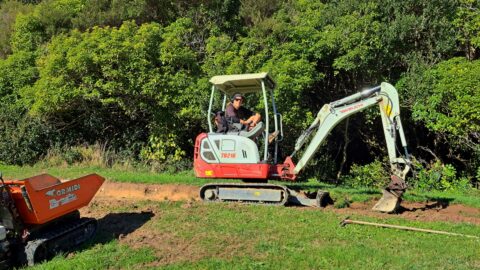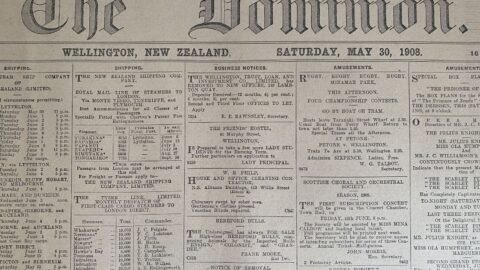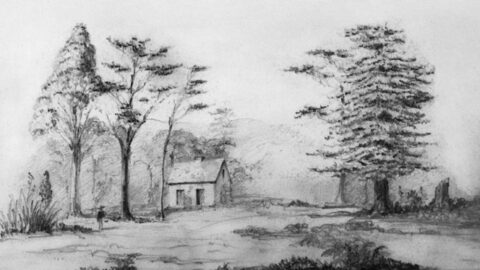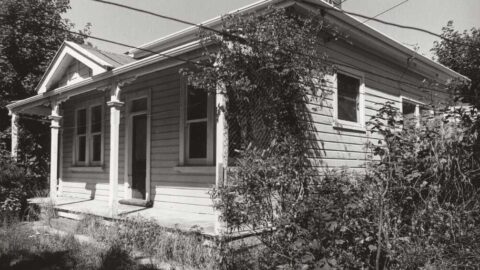CITY WATER SUPPLY
POND TO £750,000 SCHEME
WATERWORKS ENGINEER GOES BACK
MANY SCHEMES AND MEN
From Tinakori springs to an Orongorongo scheme costing three-quarters of a million, Mr J. M. Mouce, city waterworks engineer, carried his listeners at the Philosophical Society when he sketched for them the history of Wellington’s water supply.
“In the early days of the city, the sources of water supply were springs, streams, wells and lofts of buildings,” said Mr Mouce. “The water from these sources, especially the three last-named, is liable to be polluted as population increases, and a report from Dr Hector (afterwards Sir James Hector) to the City Council in 1871, shows that much of the water from these sources in Wellington was far from being satisfactory.
So far as I can learn, the first water supply conveyed any distance by pipes in Wellington was taken by the Government from springs in their property in Tinakori Road to serve their various buildings in Hill Street, Molesworth Street and Lambton Quay. Apparently the supply was more than was required for this purpose, for in October 1868, we find the Colonial Secretary writing to the Town Board offering surplus water from the tank in Hill Street. This, however, the board could not see its way to pay for.
Thereupon, a few businessmen, headed by the late Mr H. F. Bogan, arranged to purchase the surplus water and received the board’s permission to lay pipes in the streets. Whether these pipes were ever laid I have not been able to find out, but very soon after, the Government and the board agreed to extend pipes from the Government tanks to the beach for the purpose of supplying water to Her Majesty’s ships.
“In March 1871, the City Council (constituted under the Municipal Corporations Act of 1870) considered a report of the city surveyor, Mr Nicholas Marchant, whose proposal was the first for a really adequate supply for the city. It included the construction of a storage reservoir of 35 million gallons capacity at Karori, a tunnel about 1200 feet long to Polhill Gully, a service reservoir to hold 500,000 gallons, and about 18½ miles of pipes. The estimated cost of the whole work was £17,358, but whether the work had been carried through for that sum I have been unable to ascertain. The minutes of the council do, however, show that the contractor had made claims for ‘extras’ in respect of the service reservoir equal to the whole amount allocated by Mr Marchant for its construction.
AN ADEQUATE SUPPLY
“The Karori supply seems to have been sufficient for the city for eight or ten years, but about 1880, or perhaps earlier, it became evident that some other supply was required, and the council’s attention was directed to Wainui-o-Mata. By this time, the late Mr J. D. Baird had been appointed city surveyor. Mr Baird designed and carried out the construction of works, which, with the Karori works, met the demand of the city for nearly thirty years. These works were a reservoir or settling basin on the Wainui-o-Mata River, a tunnel about 35 chains long through the hills dividing the Wainui Valley from the Hutt Valley, and two shorter tunnels, a water race over a mile long along the hillside of the Wainui Valley immediately below the reservoir, and mains leading to Thorndon Quay, Tinakori Road and Featherston Street.
“The race was kept in use until, in 1902, the city engineer, Mr R. S. Rountwaite, replaced it by extending the 30-inch main right up to the reservoir. This reservoir afforded small storage, and at first the flow of the stream was depended on to supply the city. As the flow of the stream has been known to shrink in dry weather to about 2½ million gallons per day, while at that time the city demanded from Wainui at least three million, the necessity for increased storage became apparent, and Mr Rountwaite made proposals for a new supply, which were rejected at a small poll of ratepayers.
ENTER MR MORTON
“The late Mr W. H. Morton was appointed city engineer in 1904, and in the same year he presented a report to the council. In its main features, the proposals were similar to those suggested by Mr Rountwaite, namely the increase of storage at Wainui and Karori, the acquisition by the council of all the catchment area at Karori (most of the catchment at Wainui already belonged to the city, and the balance has since been acquired), and the improvement of the reticulation in the city. The necessity for these works had become more urgent by the amalgamation with the city of the borough of Melrose, which included Kelburn, Brooklyn, Vogeltown, Island Bay, Kilbirnie, Hataitai, and Roseneath.
“The ratepayers were kinder to Mr Morton’s proposals than they had been to Mr Rountwaite’s, and one of the first works carried out was the construction of the second dam at Karori, about three-quarters of a mile upstream from Mr Marchant’s dam, and about 116 ft higher. This structure is a concrete wall of gravity section built on a curve of 300 ft radius, and it impounds 62½ million gallons. Top water level is 70 ft above the bed of the stream. In only one winter since its construction has it failed to fill, and in the following April (1923) it was bone dry, but a few weeks later it was overflowing. Its usefulness has amply justified the cost of construction.
MORTON DAM
“Later the natural growth of the original city required a greater quantity of water than the works at Wainui constructed by Mr Baird were able to supply, and to supplement them, the additional storage recommended by Mr Morton in his report of 1904 was constructed. This took shape in a reinforced ‘Ambursen’ dam of cellular construction, 540 feet long on the top and 41 ft high from river bed to bywash level, impounding 107 million gallons. This was a splendid addition to the city’s storage, and the City Council showed its appreciation of Mr Morton’s efforts by naming the new dam after him. The Morton Dam has served the city well. On only one occasion has its storage been exhausted. On Good Friday morning, 1917, it was empty, and an attenuated stream which very imperfectly represented the Wainui River cut a channel in the mud which settled in the basin.
“In 1919, before leaving on his visit to Great Britain and America, Mr Morton presented a report to the council on the capabilities of the supply to the city and the possibilities of extension to meet the further requirements of the city and adjoining districts, including the Orongorongo scheme, which was adopted.
“The proposal to bring water from the Orongorongo did not originate with Mr Morton. It was brought forward by Mr Baird in the earliest days of the Wainui scheme. Mr Morton’s scheme, which is now being carried out, is very much larger. The catchment area tapped is from fourteen to fifteen square miles, and the tunnel, two miles long instead of seven chains. The tunnel is seven feet wide and seven feet high, and was driven from the Wainui end on a rising grade of 1 in 165 and from Orongorongo on a rising grade of 1 in 500. The labour for driving, trucking, tipping, timbering, blacksmithing, laying rails and pipes for compressed air and water for the drills, and the 21-inch steel water main for ventilation, was supplied by the Orongorongo Co-operative Tunnelling Party, better known as Semple’s Party, who had a contract with the corporation. The corporation supplied all the necessary plant, tools, material and explosives as well as huts for the men to live in.

